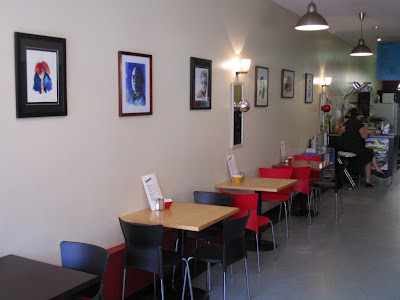 |
| Fukushima Samurai in the nuclear fires, oil and bitumen on board, 90x120 cm |
 Fukushima samurai in the nuclear fires has been published in the tri-annual journal Sortir du nucléaire, by the French anti-nuclear network Réseau "Sortir du nucléaire", a federation of over 900 anti-nuclear groups from around the world with a membership of over 53,000. It is out in the Summer edition, No. 50, which you can read HERE. Xavier Rabilloud, the editor, found my Fukushima work on line and asked if i would allow him to publish a reproduction.
Fukushima samurai in the nuclear fires has been published in the tri-annual journal Sortir du nucléaire, by the French anti-nuclear network Réseau "Sortir du nucléaire", a federation of over 900 anti-nuclear groups from around the world with a membership of over 53,000. It is out in the Summer edition, No. 50, which you can read HERE. Xavier Rabilloud, the editor, found my Fukushima work on line and asked if i would allow him to publish a reproduction.I find it very satisfying that my art is seen as a relevant contemporary voice in the world and is sought out for publication.
I guess that makes the whole of my Fukushima series a sort of Neo-Arte Nucleare. (Arte Nucleare was a French art movement of 1950's Art Informel).
Now there were three children from the land of Israel
Shadrack, Meshach, Abednego!Ah they took a little trip to the land of Babylon
Shadrack, Meshach, Abednego!
And ol’ Nebudchanezzer was the king of Babylon
Shadrack, Meshach, Abednego!
So they took a lot of gold, and made ‘em an idol
Shadrack, Meshach, Abednego!
“Oh, you gotta bow down and worship the idol!”
Shadrack, Meshach, Abednego!
Ah, but the children of Israel would not bow down!
Shadrack, Meshach, Abednego!
So the king cast the children in the fiery furnace
Shadrack, Meshach, Abednego!
He heaped on coal and red-hot brimstone
He heaped on coal and red-hot brimstone
Shadrack, Meshach, Abednego!
Even made it seven times hotter than it oughtta be!
Shadrack, Meshach, Abednego!
Now they burned up the soldiers that the king had put thereShadrack, Meshach, Abednego!
Oh, Shadrack! Meshach, Abednego!
Shadrack, song written by Robert MacGimsey In 1930.
Hear the inimitable Louis Armstrong perform this song on Youtube here.
Which leads us to story-time.
Nebuchadnezzar ran a prosperous economy. Soon everyone in Babylon worshipped the golden idol of high dividend yields and strong capital gains. Shadrack, Meshach, Abednego, three foreign workers, would not bend the knee to Babylonian glory. So Big N had them cast into the fiery furnace.
Both the energy company's plant operating procedures and government regulations specified the permissible upper ranges for thermal production. But there is no rage like that of an emperor who has been revealed to have no clothes, so Nebuchadnezzar ordered the furnace stoked seven times hotter than it ought to be.
The plant CEO, seeing an opportunity for greater shareholder returns, was only too willing to bend the rules. Security personnel patrolling the facility, believed to be a safe distance from the thermal source, were consumed by the radiant heat in direct violation of the occupational health and safety standards for all non-engineering human resource units. Dutiful workers became collateral damage to a boom economy.
It was into this furnace that the Babylonian State executive, with the connivance of the courts, condemned Shadrack, Meshach, Abednego, while Nebuchadnezzar, from the safety of his ziggarat penthouse God-King suite overlooking the Tiber, watched them on TV as they pushed on through the flames .
His spin doctors were already working on the press release: something about "volunteer plant workers suffering regrettable collateral damage while struggling to contain Unit One" but that "the government assures the populace that there is absolutely no risk to nearby residents" because "a meltdown of the furnace core is an impossibility" given the advanced state of Babylonian technology.
And, gentle reader, you may make your own connections, if any, between this story, that song and this my latest painting, Fukushima Samurai in the nuclear fires.
And so a fragmanted figure, all identity swallowed in the shell of the suit and by the ambiguity of smokey fallout, struggles through the consuming elemental fluxus all around.
These events in turn, to my mind, are representative of the limitations of human endeavour, that is, the feet of clay in all human enterprise - human imperfection.
But my Masters Degree research project is about expressive mark-making, and therefore I also wanted to refine my monoprinting mark-making technique. Through creating this particular work i now have far greater understanding of the degree of randomness of the mark. Tis a function of: the wetness of the paint, the amount of pressure during printing, and how various tools maybe used for applying that pressure.
However, i never want complete control or anything near it because that would rob the paint of its unique material agency and so remove happen-chance from the work. Serendipity is not only essential to the technique but, subliminally, to the expressive force and meaning of the work.
The chaos of the flow of paint is eloquent about the chaos of events, the chaos at the edges of civilisation, the chaos in the heart of human social organisation ... and the unpredictable fluxus in our own lives.










































































.jpg)







